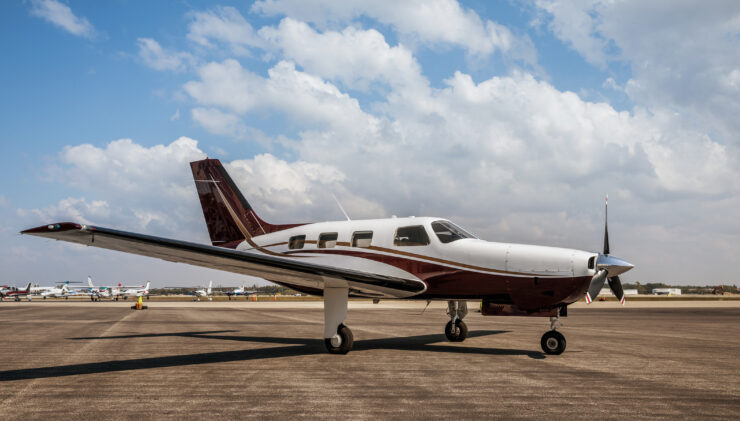 Owned vs. Rented or Borrowed: Aviation Insurance Needs
Owned vs. Rented or Borrowed: Aviation Insurance NeedsWhen deciding whether to rent or borrow a non-owned aircraft or fly an aircraft you own, there are many issues to consider – from fuel, hangar and maintenance costs to convenience or pleasure. Another factor to consider is the type of insurance coverage you’ll need. Your aviation insurance needs will depend on whether you own, rent, or borrow. To make sure you’re protected, it’s important to have the right type of coverage in place.
Aviation Insurance for Owners
Insurance is important for anyone who owns an aircraft. It may be required by law and by hangar operators and lending institutions if you have financed your aircraft. The U.S. Government Accountability Office says 11 states have aviation liability insurance or aircraft financial responsibility requirements.
Besides meeting legal and contractual requirements, maintaining insurance makes sense. A lot can go wrong when flying an aircraft, including injuries to passengers, injuries to people on the ground, damage to other people’s property, and damage to the aircraft itself. Insurance provides valuable protection for your investment, your personal finances, and will provide peace of mind.
The typical aircraft insurance policy for those owning aircraft include the following coverages:
- Bodily injury liability for persons injured outside the aircraft.
- Bodily injury liability for passengers injured within the aircraft.
- Property damage liability for damage to other people’s property.
- Medical coverage for minor injuries. Serious injuries to be covered by bodily injury insurance.
- Physical damage (AKA Hull) coverage for ground and flight related losses to the insured aircraft.
- Many aviation insurance carriers include an extension, within their aircraft insurance policies, of the aircraft bodily injury and property damage coverage to the negligent operation of airport premises.
Aviation Insurance for Renters or Borrowers
When renting or borrowing a non-owned aircraft there is a potential for negligently causing bodily injury to others, damaging their property, or damaging the aircraft itself. Any such loss may result in litigation, and (if the case is lost) a drain on your bank account. The aircraft owner may have no obligation to provide the non-owner with any insurance coverage. Self-protection by having your own insurance is very important when renting or borrowing. A Non-Owned Aircraft Liability insurance policy can provide defense at the insurance company’s expense and pay damages up to the limit of liability purchased. A non-owned aircraft liability policy is strictly a liability policy. The company only pays if the policyholder is found negligent. If renting or borrowing a non-owned aircraft, protect your pocketbook and attain peace of mind by having your own non-owned aircraft liability insurance policy. Aviation insurance brokers can assist you in this area.
Whether Renting, Borrowing or Owning an Aircraft, Before You Fly, Understand Your Coverage
Imagine yourself in the following scenarios.
- The weather forecast predicts a slight chance of showers, but you think you’re fine to fly. Then, the weather turned out worse than expected. You end up making a rough landing that causes damage to the aircraft and injures a passenger.
- Your aircraft is hit by a bird strike, causing you to crash into a residential area. Thankfully, no one is seriously injured, but you’re on the hook for damage to two houses.
- While its in the hangar, vandals damage your aircraft. You won’t be able to fly until it’s repaired.
If scenarios like these occur, or something else goes wrong, the right coverage will help make things right again. To gain peace of mind, ask the following questions:
- Are you in compliance with local, state, and federal laws concerning insurance or financial responsibility? You may need to maintain liability insurance coverage with minimum limit requirements.
- Are you meeting all contractual requirements, including lender requirements and hangar requirements? Read your contracts carefully to understand these requirements.
- If you are entering into a rental agreement, do both parties understand their responsibilities and insurance requirements? To protect both parties and prevent disputes, the rental agreement should be in writing.
- Do you have coverage for both passengers and non-passengers who may be injured? You may need two types of coverage to secure both protections.
- Do you have coverage for damage to the aircraft at all times, including when it is in storage, taxiing, and in flight? Damage may occur at any point – and aviation repairs are costly.
- Do you have coverage for damage to other people’s property? Make sure you have coverage for third-party damage that could occur during taxiing or in the event of a crash or rough landing.
- Do all the pilots who operate the aircraft have coverage, including the owner and any renters?
- Do you understand the fine print in your aviation insurance policies? Pay attention to any exclusions, requirements, or limits as well as any deductibles you may be responsible for.
Do you need help securing aviation insurance? Contact us.
